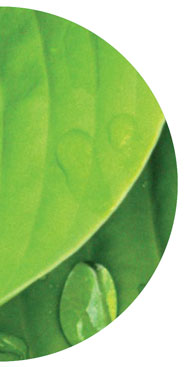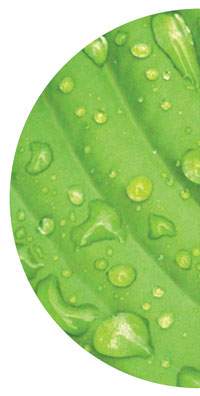Trade Marks
The nature of a Trade Mark
In South Africa, a trade mark is a distinctive sign, symbol, or combination of elements that identifies the goods or services of one business from those of another. It can be a word, phrase, slogan, logo, symbol, colour, smell or a combination of these.
Importantly, anything that is purely descriptive of the goods and/or services covered, or is reasonably required for use in the relevant trade, will not be afforded trade mark protection. Ideally, a trade mark for a business should be something coined and unique which does not refer, descriptively, to the product/services in question (nor any closely related).
All pending and registered trade marks appear on our local Trade Marks Register, which can be searched to confirm availability of a trade mark and/or any possible third party rights. We at our firm advise our clients to instruct us to conduct the necessary trade mark availability searches prior to filing a trade mark application in order to determine its availability and whether the identical mark and/or any similar mark already exists, which could pose as an obstacle to securing registration.
The Nice Classification System
South Africa, like many other countries, adopts the Nice Classification System to categorize goods and services. This international classification system divides goods and services into 45 classes:
Classes 1 – 34 Cover goods
Classes 35 – 45 Covers services
Why is classification important?
Clear Identification – It helps identify the specific goods or services a trade mark is intended to be used for and/or associated with.
Accurate Registration – Ensures that the mark is registered in the correct class/es to provide comprehensive protection.
Effective enforcement – Assists in enforcing trade mark rights against infringement.
International recognition – Facilitates international trade mark protection and licensing.
How to determine the right class/es
Identify the goods or services – Clearly define the products or services your business offers
Consult the Nice Classification – Refer to the Nice Classification to find the appropriate classes for your goods or services.
Seek professional advice – Consult with our intellectual property team to ensure accurate classification
The registration process
The registration process entails the following: -
- An on-line application form is completed, which must contain the details of the applicant, a physical address, the mark as well as the relevant class of goods and/or services to be covered.
- The e-filing system records the date of the application and allocates a serial/application number to it.
- The next step is the examination of the application by the Registrar Office. Currently it can be anticipated that examination occurs within 8-12 months from date of application. The examiner will consider whether all formalities have been me and whether the application has been made in the prescribed manner. Further it will conduct a substantive examination, which will include consideration of the mark as well as all other marks on register. The relevant examiner may issue a conditional acceptance requesting certain conditions be met prior to formally accepting the application, alternatively, provisionally refuse the application based on prior registrations on register.
- Once the requirements of the examiner have been complied with, or we have successfully argued against a refusal by way of written representations to be made, a Notice of Acceptance is issued.
- We then arrange for the application to be advertised in the monthly Patent Journal at the end of the month in which the application was approved. Once advertised, any third parties have three months from date of publication to formally oppose the application should they wish to do so (opposition proceedings are very similar to High Court proceedings).
- If no opposition is entered within the three month period, an electronic registration certificate is issued by our local Registry. Currently there is about a six months delay in the issuance of registration certificates. The current turnaround time from filing a trade mark application up until registration in South Africa is between 20 – 24 months but further delays can arise.
The effective date of the registration is the date of application when it was initially filed, not the date the registration certificate was issued and is renewable every 10 years. It is imperative to note that should the trade mark registration not be used for a continuous period of five years, the registration becomes vulnerable to removal on the basis of non-use.
Thus, a registered trade mark in South Africa can be protected indefinitely, provided it is renewed every 10 years upon payment of the prescribed renewal fee.
The effect of a trade mark registration and/or the benefits include the following:
• Exclusive rights – A registered trade mark grants you the exclusive rights to use your brand in connection with the specified goods or services. This prevents others from using similar or identical marks that could confuse consumers.
• Legal protection – Trade mark registration provides a strong legal foundation to protect your brand from infringement. If someone infringes on your trade mark, you can take legal action to stop them from doing so and seek damages.
• Deters Infringement – The mere act of registering your trade mark can deter potential infringers. The R symbol associated with a registered trade mark serves as a clear warning to others.
• Brand recognition – A registered trade mark helps build brand recognition and customer loyalty. It creates a unique identity for your business and makes it easier for customers to identify and remember your products/services offered.
• Competive Edge – A strong registered trade mark can give you a competitive edge in the market. It can assist you differentiate your business from competitors and attract new customers.
• Hypothecation – A registered trade mark can be used as collateral to secure loans or other financial arrangements.
• Long-term value – A registered trade mark is a valuable asset that can increase the value of your business over time. It can be licensed, sold or transferred to generate income or enhance your business value.
• Global protection – while trade marks are jurisdictional and is primarily a national process, you can extend your protection to other countries through international trade mark registration.
We can assist your business with securing trade mark registration locally, internationally as well as in various African countries.
Copyrights
Copyright protection in South Africa arises automatically upon the creation of an original work. However, there is an exception for cinematographic films, which can be registered with the Companies and Intellectual Property Commission.
Copyright owners have the right to enforce their rights through legal action if their work is infringed upon.



